Musical notation, as you may have learned in school, is a lot like a mathematical function. That is, one of those math equations that you can graph. For every x, there is exactly one y. Which means that the graph is a line that may meander up or down, but it will never loop back on itself, nor split in two, nor do anything more interesting other than getting more and more to the right as x goes up
Similarly, unless there is a repeat sign, you read notes strictly left to right. There is no symbol for linked 8th notes (aka: quavers) that play in any order aside from left to right.
And, indeed, letters of words plot a similar route. But when drawing musical lines, like the UPIC system, people sometimes want to double back. This impulse is also evident, at least occasionally, in non-musicians.
Wallenda by Penalva at the Irish Museum of Modern Art is a study in naive notation developed by a visual artist. This is an example of a closed and particular form of graphic notation, invented to communicate a monophonic line extracted from the orchestral score of Rite of Spring. Its meaning is specific and fixed.
The artist has divided the movements into sections, each of which has a single page of notation. The third movement is 153 pages. The notation is sometimes mnemonic and sometimes drawn lines. It appears to be read right to left, top to bottom. many of the images resemble piano roll notation as used by some MIDI programs. Some of the lines curve up and down, presumably tracing a melodic line. This has a strong implication of a left to right directionality. However many panels, starting with 69 in the first movement as the first such example, have loops in them.
Loop pages include 69, 94 in the first set. 16, 74, 107, 110, 111, 113 in the second set and 23, 57, 92, 93, 117, 119 in the third.
While I can only speculate as to the meanings of these gestures, some of the very tight loops do seem as if they may be intended to suggest vibrato. Some of the larger loops appear more mysterious, given their violation of the directionality implied.
Page 44 in set 2 does not loop but does have a gesture that is not a function in a mathematical sense. Instead, it goes down and then backwards. It’s meaning is intriguingly mysterious.
I would guess that the reason that people tend to want loops (despite making up a system that does not support them), has a lot to do with gestalt psychology. The relationship between it and musical notation is very beautifully illustrated, in this analysis of Cardew.
Alas, no pictures are allowed in the museum, so this post is without illustrations of Penalva’s score, but I did do some possibly ambiguous notation of my own in myPaint. In what order would you play those notes?





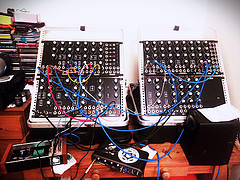



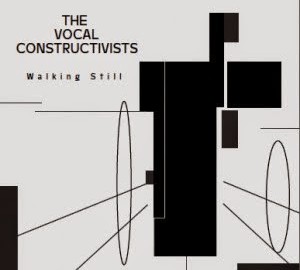
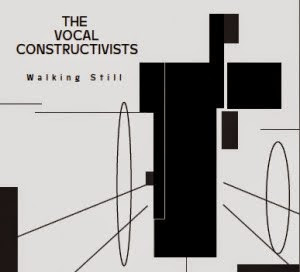
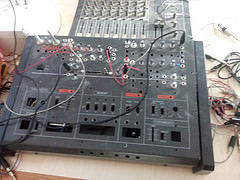
 A recycled synth I saw on Sunday.
A recycled synth I saw on Sunday.


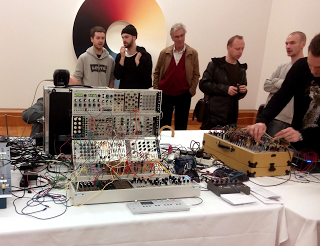


![[Puppy. Click through for album of puppy images]](http://www.celesteh.com/blog/wp-content/uploads/2014/11/15671223591_80b3e1e7cc_z.jpg)


